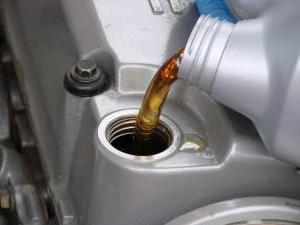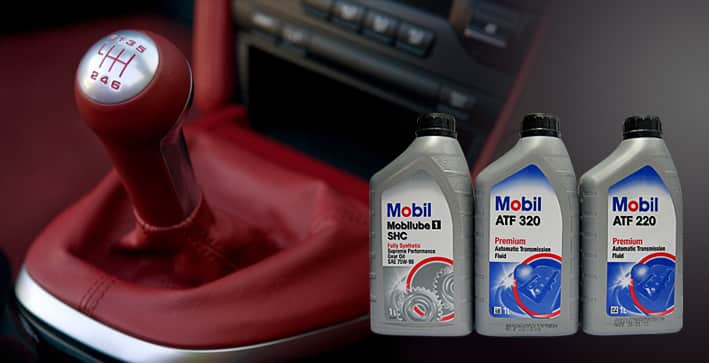Car oils and everything you need to know about motor oils. Gear oils - to mix or not
Almost all motorists know that technical condition The car is completely dependent on the quality of the engine oil and the frequency of its replacement. According to the instructions, every 7-10 km the car needs it. A newly purchased car is sold with a pre-filled service center with oil, which is recommended by the manufacturer and is ideal for the power unit. At the same time, the agent of one brand at the service station is changed without pre-rinsing, as it is recommended by the manufacturer vehicle and does not cause concern. This scheme is the best for maintaining the "health" of the machine. But in practice, things look different.
Can I mix with different specifications? Can engine oil be mixed or not? Will this affect the operation of the motor? Is it possible to mix oils from different manufacturers? eternal questions, on which there are constant disputes among motorists.
Some believe that this is absolutely impossible to do, since the stage of washing the motor will be completely excluded. Others assure that there is nothing wrong with this, and this will not affect the operation of the motor in any way.
Both sides are right in their own way. In fact, oils can be mixed, but wisely, following certain rules. Otherwise, it is possible to harm the motor, the result will be its repair.
Can different oils be mixed? Reasons why this is allowed:
- Forced need to add oil.
- Lack of the desired brand of product.
Is it possible to mix oils from different manufacturers? What do experts think about it?
- Mixing is allowed only for oils of the same category. This is the only way to avoid negative consequences with internal combustion engines.
- Mixing is permissible only if the driver plans to drive for a short period of time.
The main point of this procedure is the formation of a new chemical composition, the effect of which is impossible to predict.
When mixing oils from different manufacturers, it should be remembered that even with a thorough removal of the oil, some part of the waste remains. The result is pairing it with a fresh lubricant that they don't have full compatibility with. Many motorists fear that such a formula will not ensure 100% engine performance.
Mixing theory
As mentioned above, the combination of different oils is possible, but only subject to certain factors that need to be treated with special attention. In order to deal with this issue in more detail, you should know what types of oils are.
Synthetic
It is an oil based on artificial chemicals.
Advantages:
- low evaporation;
- good fluidity at low temperatures;
- in terms of viscosity, it reacts little to temperature fluctuations;
- high durability;
- requires fewer additives.
Mineral
Its most important component is oil. Some call this species organic.

Advantages:
- Eco-friendly - Quantity chemical substances minimized.
- Budget cost, which is sometimes decisive factor when choosing.
- Versatility.
- Availability. Available at all auto shops.
semi-synthetic
The name itself suggests that this is a combination of the first two types of oils.
Advantages:
- Low cost. The price is second only to mineral oils.
- Compatible with vehicles running on any fuel.
- Low evaporation.
- Prevents the formation of limescale.

Allowed combinations of oils:

Questions that arise in the process of car maintenance often confuse novice motorists. The situation with lubricants is subject to constant monitoring. The owner of the vehicle is obliged to regularly check and maintain a certain amount of oils in the engine and transmission system. This information car manufacturers prescribe in detail in service books, providing clear instructions on this issue. Many motorists are interested in whether it is possible to mix gear oils and what will happen as a result of such mixing? What will happen if I do this?
Gear lubricants, like engine oils, do not fully belong to unified products. In this regard, the developers strongly do not recommend experimenting in this area, and mixing oils with one another. Even if you select an oil similar in characteristics to the one used in the system, this will not provide you with full compliance. Differences in technical specifications and the additives and components included in the composition does not allow the combination of different grades and can lead to serious damage. It is worth listening to the advice of manufacturers and trying to avoid mixing, it is better to make a complete change of lubricant.
What is gear oil
In order to understand why such recommendations are given, we analyze the composition of lubricants. Gear oil consists of a base base, which can be mineral or synthetic. And this means that the basis for all manufacturers is absolutely identical. The second component is all kinds of additives and additives that are part of a certain brand of gear oil. It is the additives that provide classification according to the value of oil viscosity and the level of performance properties. This composition will distinguish one lubricant from another. This is the secret formula of different developers. Each of them has its own difference, its own unique qualities and, of course, a source of pride for the developer. In this regard, it is not recommended to interfere with them.
When developing oils for transmission, certain tolerances are taken into account, appropriate temperature conditions are calculated, a combination of various additives and additives for the successful operation of units. A feature of gear oils lies in the ability to create the necessary lubricating film, which will allow parts to withstand heavy loads upon contact. And if the driver decides to add a little oil of a different marking, you need to remember that the mismatch of the components can adversely affect the quality of the system.

What happens when you mix different oils?
In the transmission system of such temperature conditions like the engine doesn't. Therefore, the question arises, why is it impossible to add a little oil similar to the original? Such an experiment, perhaps, will pass without consequences, and may lead to precipitation in the form of flakes. Unfortunately, you will be able to see it immediately, you will not be able to prevent the consequences in a timely manner. The problem will manifest itself later, when the flakes begin to clog the entire transmission system, especially CVTs and automatic machines. Clogged filters can damage the entire system. The incompatibility of additive packages is the main reason why it is strongly not recommended to mix oils.
You also need to know that gear oils, unlike motor oils, are characterized by their viscosity and the amount of additives added. There are winter, summer and all-weather, which means universal oils. The main selection criterion is the combination of viscosity with operating temperature systems. It is worth noting that the synthetic product has a lower viscosity and is less dependent on temperature, unlike mineral oil.
The viscosity of synthetics is also less affected by temperature changes. Therefore, it can be argued that synthetic oil has a wider operating range. Synthetics are less susceptible to oxidation, and therefore have a longer service life. Well, its cost is higher compared to mineral water.

Mistakes that are often made
There is an opinion that when mixing mineral with synthetics, a semi-synthetic product will be obtained, this is not so. It is impossible to combine different bases, since the mixture will lose its lubricating and other properties. When mineral and synthetic oils are combined, foam forms and subsequently precipitates. The first symptoms can appear very soon, in the first thousand the lubricant will begin to lose its properties, it can thicken and clog the system. It is possible to eliminate such a problem only by completely draining the oil, flushing the system and replacing the entire volume of gear lubricant. It is worth recalling that with such experiments it is even easier to disable the automatic transmission than the mechanics.
Topping up analogues from different manufacturers, you will not always be able to provide the necessary qualities of transmission lubricants. Even if friends recommend you use a cheaper analogue, think carefully. Savings do not always give the desired result. Consider the possibility of contamination and breakdowns and remember that a complete flush of the system and replacement of all lubricant will entail a lot of high costs.
You need to understand that when compiling technical instructions for their cars, the developer relies on specific tasks and requirements for the uninterrupted operation of the vehicle. And this is not a whim of the automaker, but a clear awareness of responsibility for the produced car. Full responsibility for the guarantee given to the consumer. Do not forget that gear lubricants from different companies should not be mixed. Be vigilant, you can read all the information you are interested in in the service book or get advice at a service station.

And a little about the secrets of the Author
My life is not only connected with cars, namely repair and maintenance. But I also have hobbies like all men. My hobby is fishing.
I started a personal blog where I share my experience. I try a lot of things, various methods and ways to increase the catch. If interested, you can read. Nothing more, just my personal experience.
Attention, only TODAY!
Is it possible to mix gear oils and what happens if the driver accidentally or deliberately mixes different brands / types of gearbox lubricants? In order to answer this question, you need to understand that transmission and engine oils are not petroleum products that are unified.
Despite the fact that gear oils from different manufacturers may have similar performance indicators, they still differ significantly in their own base, additives, viscosity. Experts do not advise mixing different gear oils, no matter how similar their performance is.
Parameters, classification, differences in motor oils for gearboxes
It is worth saying that synthetics, semi-synthetics, and mineral water are considered the basis of gear oils produced today. different types transmission lubricants differ in viscosity, load level. API and SAE classifications are common today.
According to the SAE specification, all transmission consumables are divided into three viscosity categories.
- From 70w to 85w - for winter.
- From 80w to 250w - for summer.
- From 75w to 90w, from 80w to 140w - for any season.
The API specification divides transmission consumables into seven categories according to the maximum possible load. These categories are marked with the inscription "GL" and a number from 1 to 6. Detailed information about the composition of the lubricant and its viscosity index must be written in the manual provided by the manufacturer.

Despite the fact that, regardless of the manufacturer of the oil, synthetics and mineral water have approximately the same viscosity indexes, they seriously differ in the additive elements they contain.
It is the additives that make transmission consumables so different, do not make it possible to mix motor oils of different brands. Any company that manufactures various greases for gear boxes produces them on its own, does not disclose how the production process goes.
In emergency cases, you can mix, for example, mineral water with synthetics. Of course, a significant lack of motor oil in the checkpoint is much worse than possible mixing. Therefore, if you do not have the opportunity to buy and pour fresh synthetics into the transmission, you can replace it with mineral water. This is a temporary measure. Change mineral oil to synthetic oil as soon as possible.
Likely effects of mixing
Many motorists, when faced with the need to replenish the amount of lubricant in the manual transmission ( mechanical box shifting), they argue trivially - the transmission does not experience hard loads, like a motor, therefore, there are no special requirements for replenishing the volume of car oil. The inexperienced driver believes that there is no need to worry about the likely consequences of mixing various petroleum products. Often this approach seems to be the most practical, because consumable manufacturers set different prices for their own products.
The desire to save money can lead to sad consequences. The car may need an overhaul. This is due to chemical reactions that will definitely begin if you mix mineral oil with synthetic oil. A special precipitate will appear in the form of white flakes. The gearbox will clog, including the oil filter. Its parts will undergo deformation, severe wear.

Employees of automotive services claim that most often the transmission broke down due to the filling of a mixed lubricant (mineral oil plus synthetics) into it. When drivers interfere with motor oils, they hope to get a semi-synthetic product. Of course, this is impossible.
At first, the deterioration of the gearbox may not be very noticeable. However, gradually you will begin to notice that the modes are not switching as smoothly as before, and the wear on parts has increased significantly. This is the negative consequences of operating a car when a mixed oil fluid is poured into the gearbox.
What to do when mixing automotive oils for transmission
If the driver nevertheless mixed different motor oils for the transmission and began to notice that the functioning of the gearbox had deteriorated, he should immediately completely change the lubricant using special flushing fluids.
It is recommended to carry out a replacement in a car service. So you can guarantee yourself that the oils will not mix again. In addition, the hardware replacement of the oil product is too complicated for independent implementation.
If the operating manual does not contain data on which car oil to fill in the transmission, or you do not have the instruction itself (relevant for a used car), you can consult with a car service employee or a dealership. Alternatively, you can go to the vehicle manufacturer's website and find out everything you need there.
So, it becomes clear that the answer to the question of whether gear oils can be mixed is obvious. Under normal circumstances, this is strongly discouraged. Mixing won't do any good for your vehicle. However, if you are in difficult situation and you urgently need to replenish the supply of lubricant in the transmission, and there is no suitable car oil at hand, you can fill in what is available into the gearbox. Remember that this is considered an emergency measure. It's best never to do this. To do this, carry in the trunk a canister of oil that is optimally suited for your transmission. So you will avoid numerous problems, save yourself from the need to contact a car service and carry out a complete replacement of the car oil, which includes flushing the gearbox.
They are not unified, therefore mixing different gear oils often leads to a deterioration in the functioning of transmission units. Consider the features of mixing gear oils in detail.
Gear oil composition
Usually they consist of a base base, which can be mineral, semi-synthetic and synthetic, as well as a complex of special additives that give the oil certain viscosity-temperature properties. Each manufacturer has its own range of oils with different additive packages. The main problem when mixing gear oils is the incompatibility of additives. Therefore, mixing different gear oils can lead to negative consequences.
Negative results of mixing oils
If you mix different gear oils, the following negative results are possible:
- reduced effectiveness of certain additives;
- the appearance of unwanted sediment;
- a sharp decrease in the intervals between lubricant changes;
- increased foaming;
- excessive increase in lubricant viscosity;
- contamination of the transmission system and filters.
Is it possible to mix gear oils: features
Officially, manufacturers do not prohibit mixing them with each other. There are some ACEA and API standards that allow full blending of synthetic oil with other lubricants that meet these standards. True, the properties of the resulting oil will be relatively low.
Consider several situations for mixing oils:
- Mixing oils of different grades. Such a mixture is possible, but not in all cases. So, adding mineral oil to synthetic is highly discouraged. But adding synthetics to mineral oil can improve its performance.
- Mixing oils of various viscosities. Such mixing is acceptable, but it can have some effect on the high temperature viscosity coefficient, which is important at high operating temperatures. General indicator depends on the amount of added component.
- Mixing oils from different manufacturers. It is a highly undesirable option. The fact is that within different brands the base of the oil and the composition of the additives often differ. Thus, incompatibility of additives during mixing is possible.
So, after all, is it possible to mix? It is not easy to answer this question. It is quite possible to mix oils of the same class, viscosity and manufacturer. When mixing different oils, extreme care must be taken, carefully studying their features and the manufacturer's recommendations.
Quite often in the process of repairing a gearbox, a problem arises. It is necessary to fill in a certain brand of oil that was previously filled in, but it is not available. As a result, a logical question arises - is it possible to mix gear oils, how compatible they are, and what will happen after mixing.
To correctly solve the problem, you need to know that transmission oils do not belong to the group of unified products. Of course, they have the same characteristics, their properties are sometimes very similar. However, there are some major differences:
- Completely different package of additives;
- Response to temperature value,
- Various technological impurities;
- Responding to changing weather.
Based on the above data, professionals recommend not mixing gear oils, even if they have very similar specifications.
Mix or not
As a rule, the gearbox operates in a quieter mode when compared to the engine of the car. Therefore, at first glance, it is not worth making special requirements for gear oil, and the volume can be supplemented with any brand that is close in parameters. Such an opinion can be called a serious mistake.
Do not think that if you mix gear oil in the gearbox, then nothing serious will happen. Sometimes when choosing a composition leading role starts to play its value. This is what causes the purchase of a different brand of transmission fluid. Like, it’s still cheaper, and the characteristics are almost the same with the already filled composition. However, such a decision can lead to the failure of the gearbox and its further repair, which will cost much more than you can save on the purchase.
Of course, when the gearbox is running, it does not experience huge thermal loads, in comparison with the engine. But it must be remembered that gear lubricants are produced by different manufacturers. They add additives that differ chemically from other brands. If you start mixing such products, a chemical reaction may begin that adversely affects the operation of the gearbox.
What are the consequences of mixing
The incompatibility of oils leads to the appearance of sediment, which will begin to clog the entire transmission assembly. The automatic transmission fails immediately. The fact is that they are equipped with a special filter. The sediment quickly clogs it, the transmission stops working normally. Its parts are destroyed.
I must say that professionals talk about cases when a mixture of transmission products from the same manufacturer caused serious damage to the gearbox. The reason was a mixture of synthetics with mineral water. The oil began to foam after 500-700 km of run and precipitated white.
If such a phenomenon is not noticed in time, the mixture, together with the sediment, begins to thicken. As a result, the friction force between the moving parts increases, the seals begin to experience increased pressure, they are simply squeezed out.
What to do when mixing gear oil
If, after mixing TM, the gearbox began to work unstably, extraneous sounds appeared, it became difficult to shift gears, it is urgent to replace the lubricant, after washing the box with a special flushing fluid.
To carry out such an operation at home is quite difficult. It must be performed by specialists who can perform a complete replacement. Only after flushing, it will be possible to fill in new gear oil, taking into account the recommendations of the car manufacturer.
Recommended reading: admin 09/23/2017





